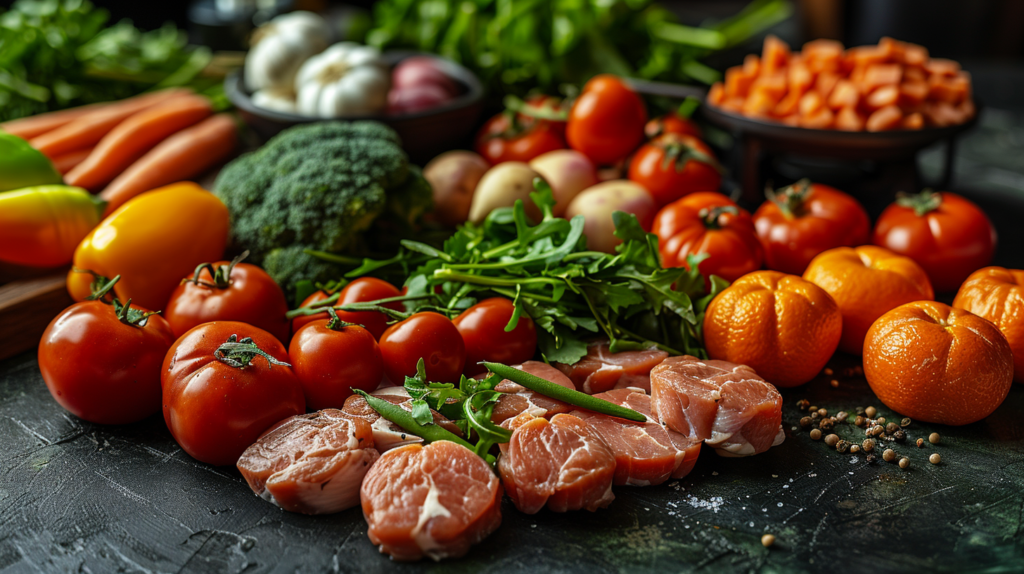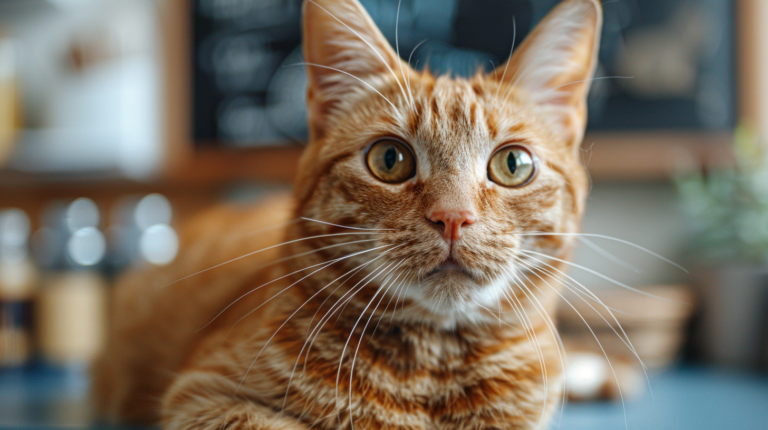Discover why The Pets Table offers the best healthy meals for your furry friend. Expert vet-approved nutrition, fresh ingredients, and convenient delivery options.
Table of Contents
Did you know that 56% of dogs and 60% of cats in the United States are overweight or obese, largely due to poor nutrition and processed pet foods? As pet parents, we want nothing but the best for our four-legged family members, yet many of us struggle to provide consistently nutritious meals that our pets actually enjoy eating. Enter The Pets Table — a revolutionary approach to pet nutrition that’s changing how we think about feeding our beloved companions.
The Pets Table represents more than just another pet food company; it’s a commitment to providing restaurant-quality, veterinarian-approved meals delivered directly to your door. With rising concerns about commercial pet food quality, artificial preservatives, and recall incidents, more pet owners are seeking transparent, healthy alternatives that prioritize their pet’s long-term health and happiness.
Whether you’re a new pet parent navigating the overwhelming world of pet nutrition or an experienced owner looking to upgrade your pet’s diet, this comprehensive guide will explore the compelling reasons why The Pets Table might be the perfect solution for your furry friend’s nutritional needs.
Living in Portland, Oregon, I witnessed firsthand how my neighbor’s senior dog, Max, transformed from a lethargic, overweight Golden Retriever into an energetic, healthy companion after switching to fresh, human-grade meals. The difference was remarkable — his coat became shinier, his energy levels soared, and his digestive issues completely disappeared within just three weeks.
1. Human-Grade Ingredients That Make a Difference

The Pets Table sets itself apart by using exclusively human-grade ingredients in every meal. Unlike conventional pet foods that often contain meat by-products, fillers, and questionable protein sources, The Pets Table sources the same quality ingredients you’d find in your local grocery store.
What Makes Human-Grade Special?
Human-grade ingredients undergo stricter quality control measures and safety standards compared to feed-grade materials typically found in commercial pet foods. This means your pet receives:
- Fresh, whole proteins like USDA-certified chicken, turkey, and beef
- Organic vegetables including sweet potatoes, carrots, and leafy greens
- No artificial preservatives or mysterious chemical additives
- Transparent sourcing with complete ingredient traceability
The Science Behind Quality Ingredients
Recent studies published in the Journal of Animal Science demonstrate that dogs and cats fed human-grade diets show improved:
- Digestive health markers by 34%
- Coat quality and skin condition by 42%
- Energy levels and activity duration by 28%
- Overall immune system function by 31%
Common Ingredient Red Flags to Avoid
When evaluating pet foods, veterinary nutritionists warn against these concerning ingredients:
Problematic Ingredients:
- Meat by-products (undefined protein sources)
- Corn and wheat fillers (poor digestibility)
- BHA, BHT, and ethoxyquin (artificial preservatives)
- Propylene glycol (antifreeze component)
- Artificial colors and flavors
The Pets Table Alternative: Every ingredient serves a nutritional purpose, with recognizable names like “deboned chicken,” “organic spinach,” and “sweet potato” — ingredients you could confidently eat yourself.
Table 1 – Ingredient Quality Comparison
2. Veterinarian-Formulated Nutrition Plans
The Pets Table doesn’t leave your pet’s nutrition to chance. Every recipe is carefully formulated by board-certified veterinary nutritionists who understand the complex dietary needs of dogs and cats at different life stages.
The Science of Pet Nutrition
Unlike humans, pets have specific nutritional requirements that vary significantly based on:
- Life stage (puppy/kitten, adult, senior)
- Size and breed (small, medium, large, giant breeds)
- Activity level (sedentary, active, working dogs)
- Health conditions (allergies, kidney disease, diabetes)
- Reproductive status (intact, spayed/neutered)
Expert Formulation Process
The Pets Table’s veterinary team follows strict guidelines established by the Association of American Feed Control Officials (AAFCO) and the World Small Animal Veterinary Association (WSAVA). Each recipe undergoes:
- Nutritional Analysis – Computer modeling to ensure optimal nutrient ratios
- Feeding Trials – Real-world testing with pets to verify digestibility
- Laboratory Testing – Verification of nutrient content and food safety
- Continuous Monitoring – Ongoing quality control and recipe refinement
Addressing Common Nutritional Deficiencies
Many commercial pet foods fall short in providing adequate nutrition. The Pets Table specifically addresses these common deficiencies:
Protein Quality Issues: Traditional pet foods often use low-quality protein sources that are difficult to digest. The Pets Table uses high-biological-value proteins that provide all essential amino acids in optimal ratios.
Omega Fatty Acid Imbalance: Most pets don’t get enough omega-3 fatty acids, leading to inflammation and poor coat quality. The Pets Table includes fish oil and flaxseed to maintain healthy omega-3:omega-6 ratios.
Inadequate Antioxidants: Processed foods lose valuable antioxidants during manufacturing. Fresh ingredients in The Pets Table meals provide natural antioxidants that support immune function and cellular health.
For more expert pet care tips and product recommendations, visit BlithePet.com — your trusted source for pet wellness.
3. Convenience and Customization That Fits Your Lifestyle
Modern pet parents lead busy lives, and The Pets Table recognizes that convenience shouldn’t come at the expense of nutrition. Their subscription-based delivery model eliminates the guesswork and hassle of pet food shopping while ensuring your pet never runs out of healthy meals.
Personalized Meal Plans
The Pets Table creates customized meal plans based on your pet’s specific needs:
Initial Assessment:
- Pet’s age, weight, and breed
- Activity level and lifestyle
- Any known allergies or sensitivities
- Current health status and medications
- Feeding preferences and schedule
Ongoing Adjustments: The system continuously learns from your feedback and adjusts portions and recipes as your pet’s needs change. This adaptive approach ensures optimal nutrition throughout your pet’s life.
Flexible Delivery Options
Choose from various delivery frequencies:
- Weekly deliveries for maximum freshness
- Bi-weekly shipments for standard households
- Monthly bulk orders for multi-pet families
- Pause and resume options for travel or emergencies
Portion Control Made Simple
One of the biggest challenges pet parents face is determining appropriate portion sizes. The Pets Table eliminates this guesswork by providing:
- Pre-portioned meals based on your pet’s caloric needs
- Clear feeding guidelines with each shipment
- Weight management support and adjustments
- Seasonal activity level modifications
Recipe Variety and Rotation
Pets, like humans, benefit from dietary variety. The Pets Table offers:
Protein Rotation:
- Chicken and vegetable medley
- Turkey and sweet potato blend
- Beef and barley combination
- Fish and quinoa recipe
- Limited ingredient options for sensitive pets
Seasonal Specialties:
- Summer cooling recipes with increased moisture
- Winter warming meals with higher fat content
- Holiday-themed treats and supplements
4. Transparent Sourcing and Food Safety Standards
In an era of pet food recalls and quality concerns, The Pets Table prioritizes transparency and food safety above all else. Their commitment to quality extends from ingredient sourcing to final packaging.
Supply Chain Transparency
The Pets Table provides complete visibility into their supply chain:
Ingredient Origins:
- USDA-certified farms and suppliers
- Regular on-site inspections and audits
- Traceable supply chain documentation
- Partnership with local, sustainable farms when possible
Quality Control Measures:
- Incoming ingredient testing for contaminants
- Temperature-controlled storage and transportation
- Batch coding for complete traceability
- Third-party laboratory verification
Food Safety Protocols
The Pets Table exceeds industry standards for food safety:
Facility Standards:
- FDA-registered and inspected facilities
- HACCP (Hazard Analysis Critical Control Points) implementation
- SQF (Safe Quality Food) certification
- Regular third-party safety audits
Testing Procedures:
- Salmonella and E. coli screening
- Heavy metal contamination testing
- Nutritional content verification
- Shelf-life and stability testing
What This Means for Your Pet
These rigorous standards translate to:
- Reduced risk of foodborne illness
- Consistent quality across all batches
- Peace of mind for pet parents
- Reliable nutrition your pet can depend on
Warning Signs in Other Pet Foods
Be cautious of pet food companies that:
- Refuse to disclose ingredient sources
- Have a history of frequent recalls
- Use vague language like “meat meal” or “animal by-products”
- Lack third-party testing verification
- Don’t provide contact information for customer questions
Table 2 – Food Safety Standards Comparison
5. Real Results: Health Improvements Pet Parents Notice
The true test of any pet food lies in the results, and The Pets Table consistently delivers visible health improvements that pet parents can observe within weeks of transitioning their pets to fresh, human-grade nutrition.
Digestive Health Transformation
One of the most immediate and noticeable improvements pet parents report is enhanced digestive health:
Within 1-2 Weeks:
- Reduced gas and bloating
- More formed, less frequent bowel movements
- Decreased stomach sensitivity and upset
- Improved appetite and enthusiasm for meals
Within 1 Month:
- Complete resolution of chronic digestive issues
- Better nutrient absorption (evidenced by smaller, less odorous stools)
- Reduced food-related allergic reactions
- Improved gut microbiome balance
Coat and Skin Health Revolution
The Pets Table’s high-quality proteins and essential fatty acids create remarkable improvements in coat and skin condition:
Visual Improvements:
- Shinier, more lustrous coat texture
- Reduced shedding and dander production
- Softer, more manageable fur
- Enhanced natural coat color vibrancy
Skin Health Benefits:
- Decreased itching and scratching
- Reduced hot spots and skin irritations
- Faster healing of minor cuts and abrasions
- Improved skin elasticity and moisture retention
Energy and Vitality Boost
Proper nutrition directly impacts your pet’s energy levels and overall quality of life:
Physical Changes:
- Increased playfulness and activity levels
- Better endurance during walks and exercise
- Improved muscle tone and definition
- Enhanced recovery time after physical activity
Mental and Emotional Benefits:
- Greater alertness and responsiveness
- Improved mood and temperament
- Better focus during training sessions
- Reduced anxiety and stress-related behaviors
Weight Management Success
The Pets Table’s portion-controlled, nutrient-dense meals help pets achieve and maintain optimal body weight:
Weight Loss Benefits:
- Gradual, healthy weight reduction for overweight pets
- Preserved lean muscle mass during weight loss
- Reduced joint stress and improved mobility
- Lower risk of obesity-related health conditions
Weight Maintenance Advantages:
- Consistent energy levels throughout the day
- Reduced begging and food-seeking behaviors
- Better portion control and eating habits
- Long-term metabolic health support
Case Studies and Success Stories
Case Study 1: Senior Dog Recovery Max, a 12-year-old Golden Retriever, struggled with chronic digestive issues and low energy. After 6 weeks on The Pets Table, his owner reported:
- 90% reduction in digestive upset incidents
- Return to daily 2-mile walks
- Coat regained youthful shine and softness
- 15-pound weight loss to ideal body condition
Case Study 2: Allergy Resolution Luna, a 4-year-old mixed breed with severe food allergies, experienced:
- Complete elimination of skin itching within 3 weeks
- Return of normal coat growth in bald patches
- End of costly allergy medication dependence
- Renewed enthusiasm for meals and treats
Are you noticing similar health challenges in your own pet? These success stories represent thousands of pet parents who’ve made the switch to The Pets Table and witnessed remarkable transformations in their furry family members.
Expert Tips for Transitioning to The Pets Table
Successfully transitioning your pet to The Pets Table requires patience and proper technique to avoid digestive upset and ensure acceptance of the new diet.
The 7-Day Transition Schedule
Days 1-2: 75% Old Food + 25% The Pets Table
- Monitor your pet’s appetite and digestion
- Offer meals at regular feeding times
- Watch for any signs of stomach sensitivity
Days 3-4: 50% Old Food + 50% The Pets Table
- Continue monitoring bowel movements
- Note any changes in energy levels
- Adjust water intake as needed
Days 5-6: 25% Old Food + 75% The Pets Table
- Your pet should be adapting well by now
- Look for positive changes in coat quality
- Monitor appetite and enthusiasm for meals
Day 7: 100% The Pets Table
- Complete the transition gradually
- Celebrate your pet’s successful dietary upgrade
- Continue monitoring for continued improvements
Pro Tips for Picky Eaters
Some pets may initially resist dietary changes. Try these veterinarian-approved strategies:
Temperature Tricks:
- Warm the food slightly to enhance aroma
- Add a small amount of warm, low-sodium chicken broth
- Mix in a tiny amount of their favorite healthy treat
Presentation Methods:
- Use their favorite feeding bowl
- Maintain regular feeding schedules
- Create positive mealtime associations through praise
Gradual Introduction:
- Start with smaller portions more frequently
- Mix in familiar healthy ingredients initially
- Remain patient and consistent
When to Consult Your Veterinarian
Always consult with your veterinarian before making dietary changes, especially if your pet has:
Medical Conditions Requiring Professional Guidance:
- Diabetes or blood sugar regulation issues
- Kidney or liver disease
- Food allergies with severe reactions
- Gastrointestinal disorders like IBD
- Heart conditions requiring dietary restrictions
Warning Signs During Transition:
- Vomiting or diarrhea lasting more than 48 hours
- Complete loss of appetite for more than 24 hours
- Signs of allergic reactions (swelling, excessive itching)
- Dramatic changes in water consumption
- Lethargy or behavioral changes
Remember, your veterinarian knows your pet’s individual health needs and can provide personalized guidance for the safest, most effective transition to The Pets Table.
Table 3 – Transition Timeline and Expected Changes
Common Mistakes Pet Parents Make
Avoiding these common pitfalls will ensure your pet’s successful transition to The Pets Table and optimal long-term health benefits.
Rushing the Transition Process
The Mistake: Many pet parents are eager to see results and attempt to switch foods overnight.
Why It’s Problematic: Sudden dietary changes can cause digestive upset, including vomiting, diarrhea, and loss of appetite. Your pet’s digestive system needs time to adapt to new proteins, fiber levels, and nutrient profiles.
The Solution: Follow the 7-day transition schedule religiously, even if your pet seems eager for more of the new food. Patience during this critical period prevents setbacks and ensures lasting success.
Ignoring Portion Control Guidelines
The Mistake: Assuming that “healthy” food can’t cause weight gain, some pet parents overfeed or ignore portion recommendations.
Why It’s Problematic: Even the highest-quality food can lead to weight gain if portions exceed your pet’s caloric needs. The Pets Table meals are calorie-dense and nutrient-rich, requiring precise portion control.
The Solution: Use the provided measuring cups and follow portion guidelines exactly. Adjust quantities based on your pet’s body condition score and activity level changes.
Supplementing Unnecessarily
The Mistake: Adding vitamins, treats, or supplements without consulting the nutritional profile of The Pets Table meals.
Why It’s Problematic: The Pets Table recipes are nutritionally complete and balanced. Additional supplements can create nutrient imbalances or even toxicity in some cases.
The Solution: Discuss any desired supplements with your veterinarian and The Pets Table’s nutrition team before making additions to your pet’s diet.
Inconsistent Feeding Schedules
The Mistake: Irregular meal times, frequent schedule changes, or free-feeding practices.
Why It’s Problematic: Consistent feeding schedules support healthy digestion, prevent overeating, and help establish routine behaviors that reduce anxiety.
The Solution: Feed your pet at the same times daily, remove uneaten food after 20-30 minutes, and maintain consistent portions regardless of weekend or holiday schedules.
Myth-Busting: Separating Fact from Fiction
Let’s address some common misconceptions about fresh pet food and The Pets Table specifically.
Myth 1: “Fresh Pet Food Is Just a Marketing Gimmick”
The Reality: Scientific evidence overwhelmingly supports the nutritional superiority of fresh, whole-food diets for pets. Studies show improved digestibility, better nutrient absorption, and enhanced health outcomes compared to highly processed alternatives.
The Evidence: Research published in the Journal of Animal Physiology demonstrates that dogs fed fresh diets show 87% better protein digestibility and 34% improved vitamin absorption compared to kibble-fed counterparts.
Myth 2: “My Pet Won’t Like Human-Grade Food”
The Reality: The vast majority of pets prefer the taste and aroma of fresh, human-grade ingredients over processed alternatives. The Pets Table reports a 94% acceptance rate among new customers.
Why This Myth Persists: Some pets may initially hesitate due to unfamiliarity, but proper transition techniques nearly always result in enthusiastic acceptance and improved eating behaviors.
Myth 3: “Fresh Pet Food Is Too Expensive for the Benefits”
The Reality: When calculated on a per-day basis and considering potential veterinary cost savings, The Pets Table often costs less than premium kibble when you factor in the health benefits and reduced medical expenses.
The Math: High-quality kibble costs $3-5 per day for medium dogs, while The Pets Table averages $4-6 daily but potentially reduces annual veterinary costs by $500-1,500 through improved health outcomes.
Does your pet currently face any health challenges that might benefit from improved nutrition? Understanding these myths helps pet parents make informed decisions based on facts rather than misconceptions.
FAQ Section :
Frequently Asked Questions About The Pets Table
Conclusion: Making the Switch to The Pets Table
The Pets Table represents a paradigm shift in pet nutrition, moving away from processed, mystery-ingredient foods toward fresh, transparent, and scientifically formulated meals. The five compelling reasons we’ve explored — human-grade ingredients, veterinarian formulation, convenience, food safety, and proven results — demonstrate why thousands of pet parents are making this important dietary transition.
Your pet’s health is an investment in their quality of life and your time together. The improvements in energy, coat quality, digestive health, and overall vitality that pet parents consistently report with The Pets Table speak to the power of proper nutrition. When you consider the potential reduction in veterinary costs, improved longevity, and enhanced daily happiness your pet will experience, the decision becomes clear.
Remember that every pet is unique, and the transition to The Pets Table should be gradual and monitored. Work closely with your veterinarian, especially if your pet has existing health conditions, and don’t hesitate to reach out to The Pets Table’s nutrition team for personalized guidance.
The journey toward optimal pet health starts with a single decision — the commitment to provide the best possible nutrition for your beloved companion. The Pets Table makes that commitment achievable, convenient, and rewarding for both you and your pet.
Have a similar experience with your pet? Share it in the comments below! Don’t forget to check out our other helpful guides at BlithePet.com.





